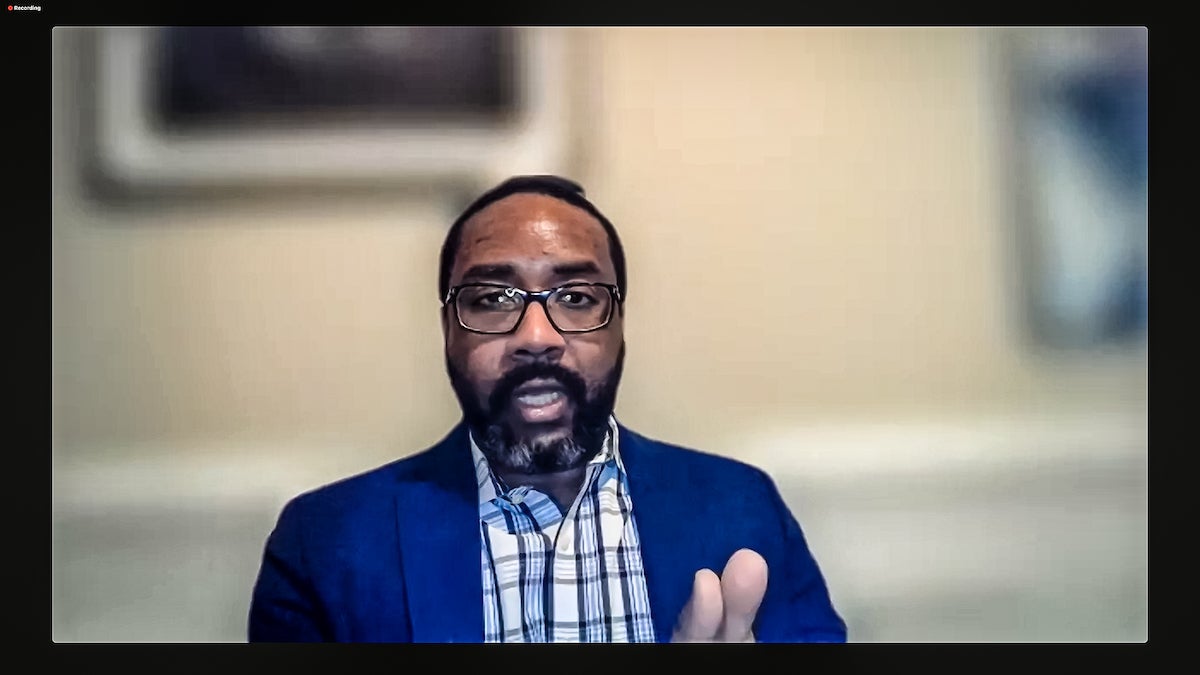Diversity in the military and why it matters

The Department of Defense is one of the greatest meritocracies in the world, but representation within the ranks isn’t reflected in leadership.
That was the subject of a Wednesday discussion on “Diversity and Inclusion in America’s Society and Military: Why It Matters.”
Co-sponsored by Arizona State University’s Center on the Future of War and Thunderbird School of Global Management, the speaker was Bishop Garrison, senior adviser to the secretary of Defense for human capital and diversity, equity and inclusion.
Garrison serves as a leading counselor on sexual assault response and prevention, extremism and other priority areas. Previously, he served as the director of national security outreach at Human Rights First. He is a graduate of the United States Military Academy at West Point and served two tours in Iraq with the Army. His job is a new position at the department.
DEI, or diversity, equity and inclusion, is a conference table, Garrison said. Around that table are people who have had a voice for a long time. The job of DEI is to add seats at the table and include people who have not had a seat before.
“It’s diversity to make sure we have the most capable teams and leaders ever to address issues in the 21st century,” he said. “What I want people to understand is that diversity makes for a stronger fighting force, it makes for a more capable force, it makes for a force multiplier across the board.”
Garrison served as a platoon leader during the invasion and occupation of Iraq from 2003–04, where he planned and led approximately 150 successful combat missions without any injuries or casualties.
From 2004–06, he served as the regimental support squadron signal officer for the Third Armored Cavalry Regiment, managing all communications and automations assets for a 1,100-soldier squadron.
Bishop Garrison, the senior adviser to the secretary of Defense for human capital and diversity, equity and inclusion, speaks with Center on the Future of War and its co-director, Daniel Rothenberg (not pictured), on the topic of "Diversity and Inclusion in America’s Society and Military."
How did going from the intensity of combat in Iraq to managing the invasion and occupation impact his sense of mission of the U.S. Army? Garrison was one of a handful of officers of color in his regiment.
“Anytime you don’t see that career arc in leadership around, you question your future,” he said.
For his first six months as a platoon leader, he didn’t have an interpreter or any way of understanding cultural nuances.
“That tool in the toolkit is a very important thing,” he said.
What obstacles are there to a more diverse senior leadership?
“All this is data-driven,” Garrison said. “We’re not going off gut feelings. ... What the data tells us is that mid-career-level individuals — particularly for women and people of color — are exiting. ... Those are the prime years that you begin going into any kind of rank qualifying positions that begin the arc for you to be competitive when you go into selection for colonel and other flag ranks.”
Sometimes the reason for leaving the military is that there’s more money to be made on the outside with your skill sets.
Sometimes young people come into the military and begin in combat support roles. To advance, you need to be in a combat unit, Garrison said.
“If you start off and you don’t have great deal of diversity in those ranks, you’re already pulling from a smaller pool,” he said. “If they don’t see that career path, they’re getting out.”
What is the timeline to show metrics on improvement? What policies can be put in place to support those goals?
“Not a quick solution by any means,” Garrison cautioned.
Recruitment numbers are a good short-term solution. Then, start looking at retention, he said.
“In the long run, the three- to five-year range, I think that’s when you can really look back and see how you’ve done on representation in our most senior ranks. ... What are we doing to invest in them?”
Top image by iStock/Getty images


